What is Mold
Molds (and mildew) are fungi. Fungi are neither plant nor animal but, have their
own kingdom. Biologically, all fungi have defined cell walls, lack chlorophyll and
reproduce by means of spores. There are over 100,000 species of fungi have been
described and it is estimated that there are at least that many waiting to be discovered.
The vast majority of fungi feed on dead or decaying organic matter – they are one
of the principle agents responsible for the natural recycling of dead plant and
animal life.
The most common fungi are currently within our environment and we are constantly
exposed to them. For the most part, however, diseases caused by these common fungi
are relatively uncommon and are rarely found in individuals with normally functioning
immune systems. Over the past few years mold has experienced high profile press
coverage. There are many reports concerning lawsuits over air quality in homes and
buildings, school classroom environments and home insurers refusing to cover mold
damage.
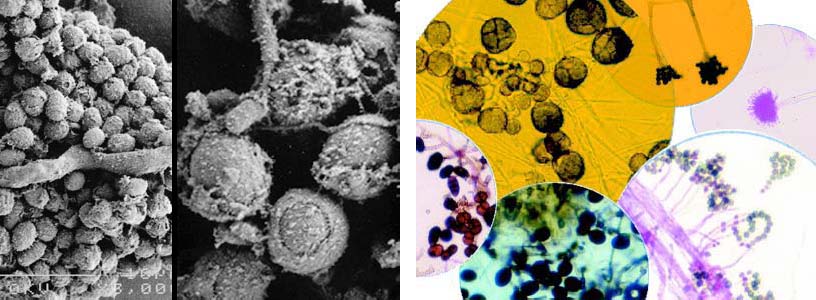
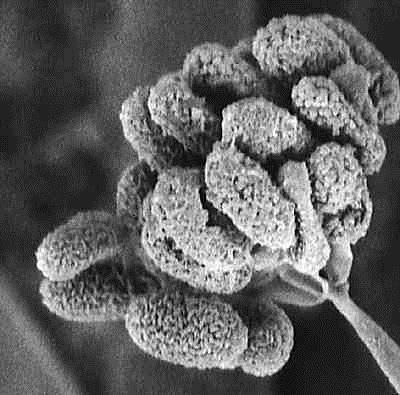
Critical Requirements
There are four requirements for mold growth;
- Mold spores.
- Available food source. ( Wood, paper and organic fibers)
- Temperature
- Moisture
Mold Spores
Mold spores are literally everywhere. There is no reasonable, reliable and cost-effective
means of eliminating them from environments that humans inhabit. So, trying to control
mold growth through the elimination of mold spores is not feasible.
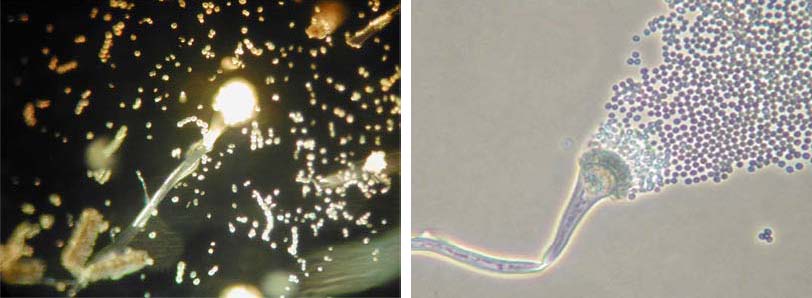
Mold Food.
Almost any substance that contains carbon atoms (organic substance) will provide
sufficient nutrients to support mold growth. And many of the most common materials
found in homes like wood, paper and organic fibers are among the most preferred
of mold nutrients. Mold can grow on inorganic materials such as concrete, glass
and metal, because it can grow on the dirt or dust that is present Thus, eliminating
mold food from your environment is a virtually impossible task.
Temperatures
Unfortunately, most molds grow very well at the same temperatures that humans prefer.
In addition, anyone who has cleaned out their refrigerator quickly realizes that
temperatures close to freezing are not cold enough to prevent mold growth and temperatures
that are much warmer than humans prefer, like those of the tropics, will grow abundant
quantities of mold. Therefore, it is not feasible to control mold growth in our
home environment through the control of temperature.
Moisture
The vast majority of mold species require "water activity" levels that
are equivalent to material equilibrium moisture contents corresponding to relative
humidity’s of at least 70%. In fact, the great majority of serious, large mold outbreaks
inside buildings occur where porous, cellulose-type materials have literally been
kept wet by liquid water or sustained condensation. A change in the humidity level
can increase spores in the air. A high relative humidity (RH) can burst the moist,
swollen cells of the mold body that form spores. This is true for Penicillium and
Aspergillus, two very common indoor molds. Human beings prefer humidity’s that are
below the critical relative humidity for mold growth. Thus, of the four basic requirements
for mold growth, moisture availability is by far the easiest mold growth requirement
to control in environments that humans like to inhabit. Common household molds have
a characteristic "musty" or "earthy" smell, somewhat like the
forest floor deep in the woods. Growing colonies of mold can also be visually observed
in many cases.
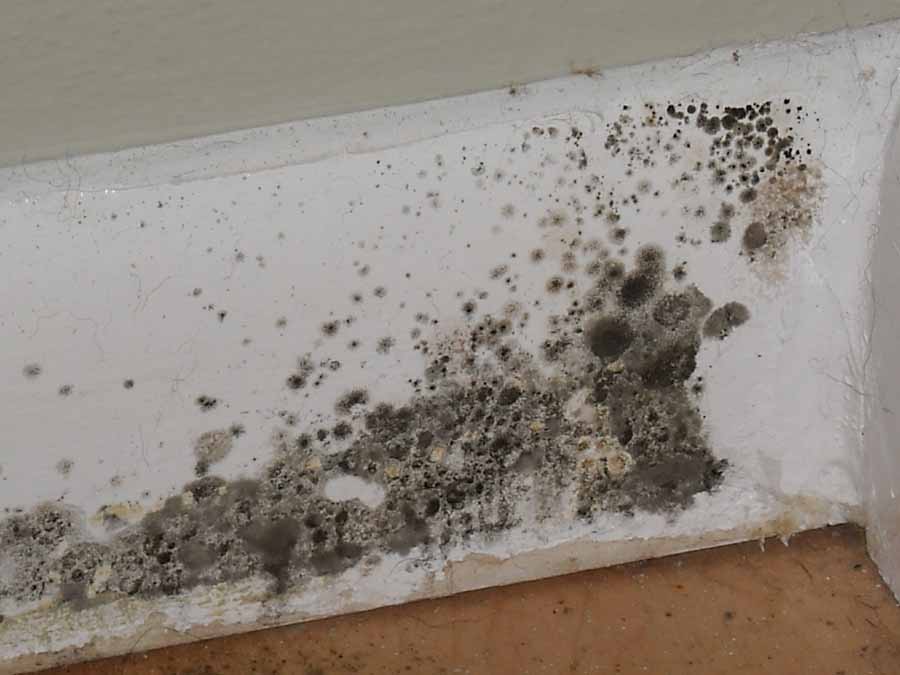 | 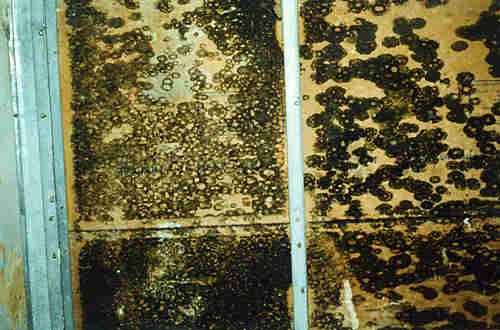 |
Wall mold
Although most active mold colonies appear greenish to black (typical of mold growing
on bathroom tile grout) in color, the characteristics of mold colonies growing behind
vinyl wall covering in buildings takes on very different characteristics. These
mold outbreaks typically result in pinkish to yellowish staining of the wall covering.
They are quite important because they indicate serious, detrimental moisture accumulations
within the gypsum wallboard behind the wall covering that can not be removed by
your air conditioning or dehumidification systems. Where these problems appear,
they usually require the assistance of a professional equipped with pressure measurement
and other diagnostic equipment to determine the source(s) of the moisture causing
the problem.
Where to Next?
|